Siniša Družeta
Predictive modeling of microbiological seawater quality classification in karst region using cascade model
Feb 11, 2022Abstract:In this paper, an in-depth analysis of Escherichia coli seawater measurements during the bathing season in the city of Rijeka, Croatia was conducted. Submerged sources of groundwater were observed at several measurement locations which could be the cause for increased E. coli values. This specificity of karst terrain is usually not considered during the monitoring process, thus a novel measurement methodology is proposed. A cascade machine learning model is used to predict coastal water quality based on meteorological data, which improves the level of accuracy due to data imbalance resulting from rare occurrences of measurements with reduced water quality. Currently, the cascade model is employed as a filter method, where measurements not classified as excellent quality need to be further analyzed. However, with improvements proposed in the paper, the cascade model could be ultimately used as a standalone method.
Coastal water quality prediction based on machine learning with feature interpretation and spatio-temporal analysis
Jul 09, 2021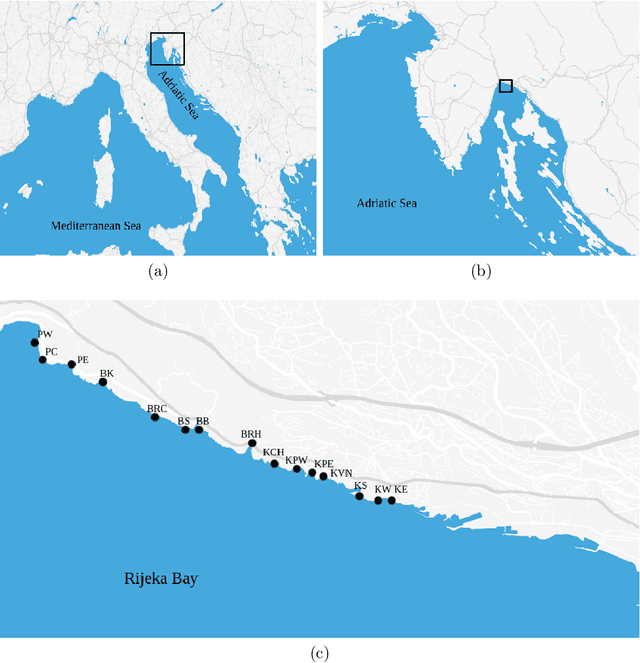

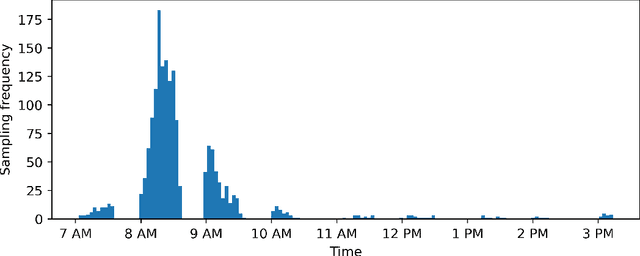
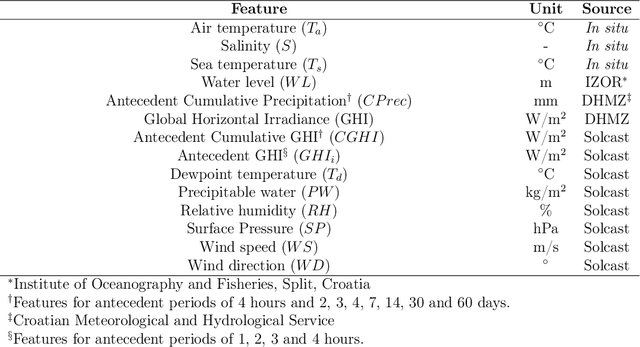
Abstract:Coastal water quality management is a public health concern, as poor coastal water quality can harbor pathogens that are dangerous to human health. Tourism-oriented countries need to actively monitor the condition of coastal water at tourist popular sites during the summer season. In this study, routine monitoring data of $Escherichia\ Coli$ and enterococci across 15 public beaches in the city of Rijeka, Croatia, were used to build machine learning models for predicting their levels based on environmental parameters as well as to investigate their relationships with environmental stressors. Gradient Boosting (Catboost, Xgboost), Random Forests, Support Vector Regression and Artificial Neural Networks were trained with measurements from all sampling sites and used to predict $E.\ Coli$ and enterococci values based on environmental features. The evaluation of stability and generalizability with 10-fold cross validation analysis of the machine learning models, showed that the Catboost algorithm performed best with R$^2$ values of 0.71 and 0.68 for predicting $E.\ Coli$ and enterococci, respectively, compared to other evaluated ML algorithms including Xgboost, Random Forests, Support Vector Regression and Artificial Neural Networks. We also use the SHapley Additive exPlanations technique to identify and interpret which features have the most predictive power. The results show that site salinity measured is the most important feature for forecasting both $E.\ Coli$ and enterococci levels. Finally, the spatial and temporal accuracy of both ML models were examined at sites with the lowest coastal water quality. The spatial $E. Coli$ and enterococci models achieved strong R$^2$ values of 0.85 and 0.83, while the temporal models achieved R$^2$ values of 0.74 and 0.67. The temporal model also achieved moderate R$^2$ values of 0.44 and 0.46 at a site with high coastal water quality.
Anakatabatic Inertia: Particle-wise Adaptive Inertia for PSO
Jul 31, 2020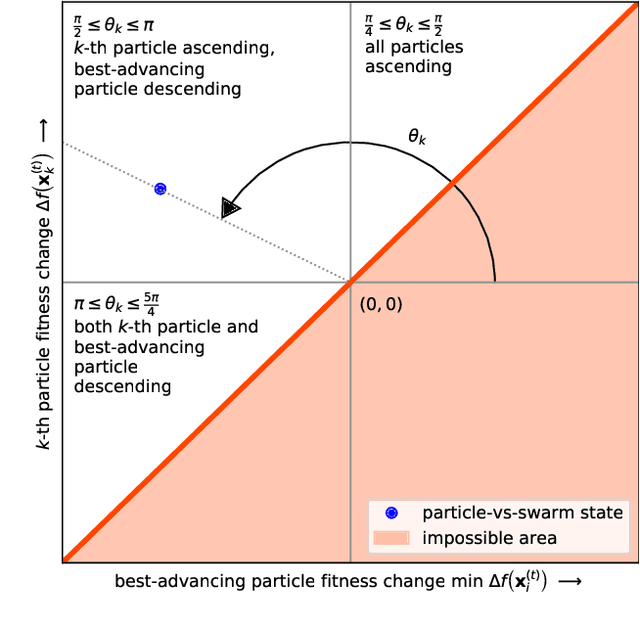

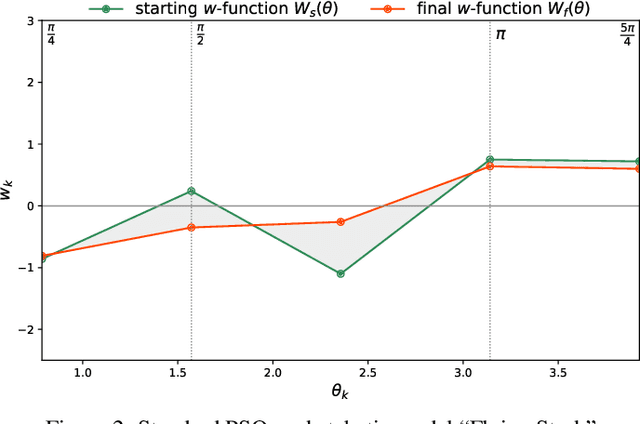

Abstract:Throughout the course of the development of Particle Swarm Optimization, particle inertia has been established as an important aspect of the method for researching possible method improvements. As a continuation of our previous research, we propose a novel generalized technique of inertia weight adaptation based on individual particle's fitness improvement, called anakatabatic inertia. This technique allows for adapting inertia weight value for each particle corresponding to the particle's increasing or decreasing fitness, i.e. conditioned by particle's ascending (anabatic) or descending (katabatic) movement. The proposed inertia weight control framework was metaoptimized and tested on the 30 test functions of the CEC 2014 test suite. The conducted procedure produced four anakatabatic models, two for each of the PSO methods used (Standard PSO and TVAC-PSO). The benchmark testing results show that using the proposed anakatabatic inertia models reliably yield moderate improvements in accuracy of Standard PSO (final fitness minimum reduced up to 0.09 orders of magnitude) and rather strong improvements for TVAC-PSO (final fitness minimum reduced up to 0.59 orders of magnitude), mostly without any adverse effects on the method's performance.
Introducing languid particle dynamics to a selection of PSO variants
Jun 06, 2019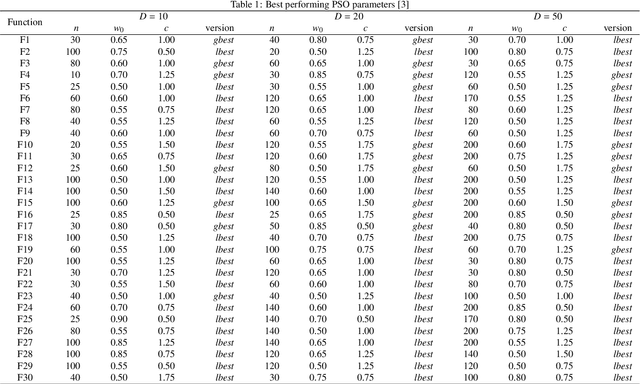
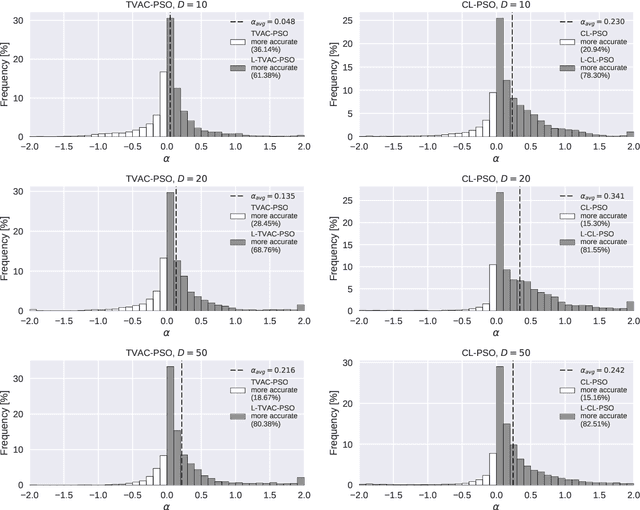


Abstract:Previous research showed that conditioning a PSO agent's movement based on its personal fitness improvement enhances the standard PSO method. In this article, languid particle dynamics (LPD) technique is used on five adequate and widely used PSO variants. Five unmodified PSO variants were tested against their LPD-implemented counterparts on three search space dimensionalities (10, 20, and 50 dimensions) and 30 test functions of the CEC 2014 benchmark test. In the preliminary phase of the testing four of the five tested PSO variants showed improvement in accuracy. The worst and best-achieving variants from preliminary test went through detailed investigation on 220 and 770 combinations of method parameters, where both variants showed overall gains in accuracy when enhanced with LPD. Finally, the results obtained with best achieving PSO parameters were subject to statistical analysis which showed that the two variants give statistically significant improvements in accuracy for 13-50% of the test functions.
 Add to Chrome
Add to Chrome Add to Firefox
Add to Firefox Add to Edge
Add to Edge